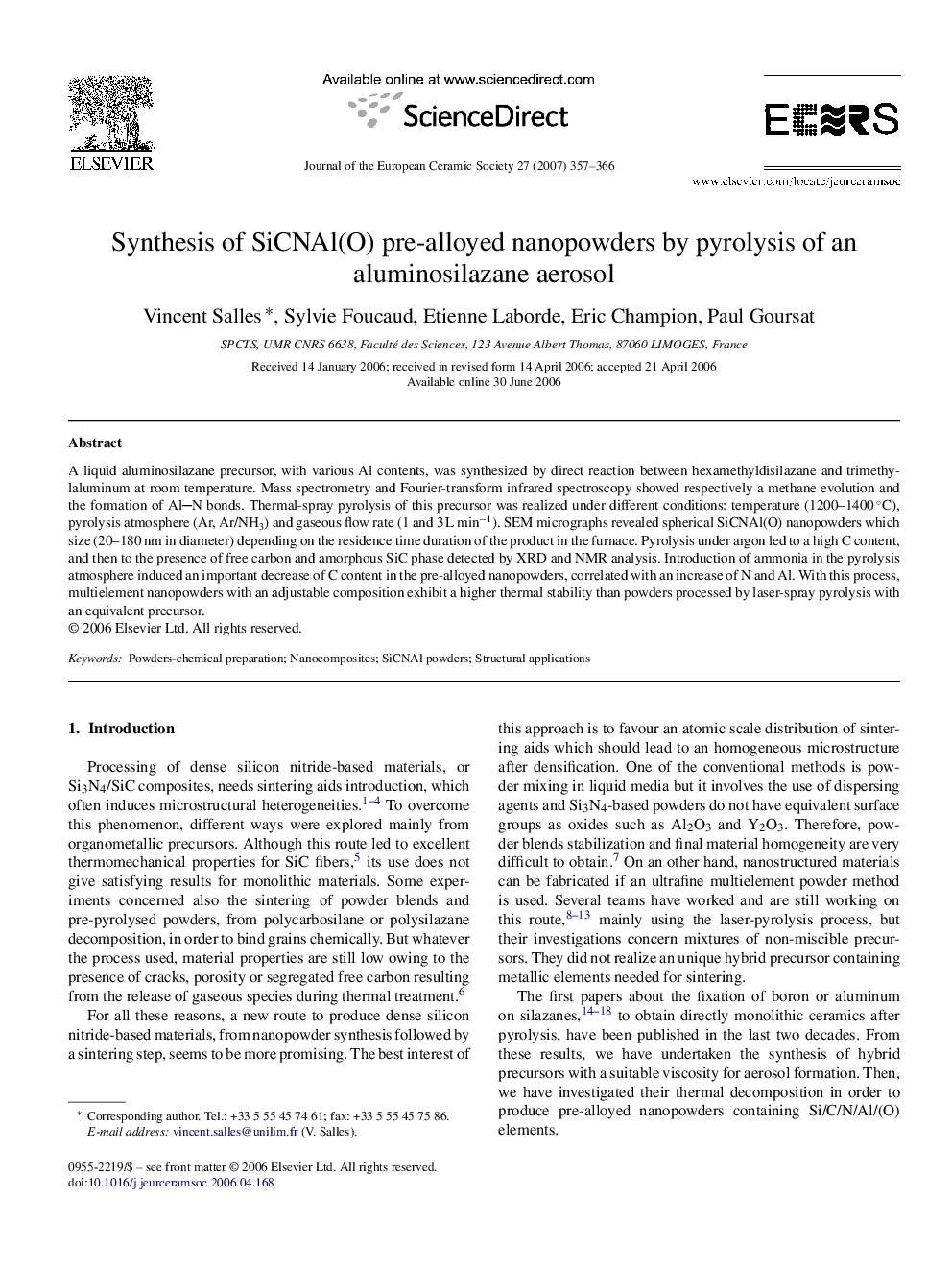| Article ID | Journal | Published Year | Pages | File Type |
|---|---|---|---|---|
| 1476990 | Journal of the European Ceramic Society | 2007 | 10 Pages |
Abstract
A liquid aluminosilazane precursor, with various Al contents, was synthesized by direct reaction between hexamethyldisilazane and trimethylaluminum at room temperature. Mass spectrometry and Fourier-transform infrared spectroscopy showed respectively a methane evolution and the formation of AlN bonds. Thermal-spray pyrolysis of this precursor was realized under different conditions: temperature (1200-1400 °C), pyrolysis atmosphere (Ar, Ar/NH3) and gaseous flow rate (1 and 3 L minâ1). SEM micrographs revealed spherical SiCNAl(O) nanopowders which size (20-180 nm in diameter) depending on the residence time duration of the product in the furnace. Pyrolysis under argon led to a high C content, and then to the presence of free carbon and amorphous SiC phase detected by XRD and NMR analysis. Introduction of ammonia in the pyrolysis atmosphere induced an important decrease of C content in the pre-alloyed nanopowders, correlated with an increase of N and Al. With this process, multielement nanopowders with an adjustable composition exhibit a higher thermal stability than powders processed by laser-spray pyrolysis with an equivalent precursor.
Related Topics
Physical Sciences and Engineering
Materials Science
Ceramics and Composites
Authors
Vincent Salles, Sylvie Foucaud, Etienne Laborde, Eric Champion, Paul Goursat,
